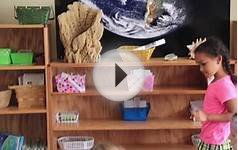 The use of personal portfolios for assessment and presentation long has been a component of higher education. In fact, personal portfolios are a graduation requirement at many colleges and universities. Now, electronic portfolios have begun to enter the world of K-12 education as well.
The use of personal portfolios for assessment and presentation long has been a component of higher education. In fact, personal portfolios are a graduation requirement at many colleges and universities. Now, electronic portfolios have begun to enter the world of K-12 education as well.
Learn what electronic portfolios are and discover how they can help you and benefit your students. Included: Guidelines for developing personal portfolios.
|
During the past four years, Todd Bergman has helped more than 550 high school students produce digital portfolios. He offers these guidelines for other educators interested in developing electronic portfolio programs in their schools or classrooms: Be realistic about your design and expectations.
|
"A portfolio is a purposeful collection of student work demonstrating the student's achievement or growth as characterized by a strong vision of content, " according to Todd Bergman, an independent consultant and a teacher at Mt. Edgecumbe High School in Sitka, Alaska.
Helen Barrett, an assistant professor and educational technology coordinator for the School of Education at the University of Alaska, Anchorage, provides another definition, one developed by the Northwest Evaluation Association:
A portfolio is a purposeful collection of student work that exhibits the student's efforts, progress, and achievements in one or more areas. The collection must include student participation in selecting content, the criteria for selection, the criteria for judging merit, and evidence of student self-reflection."Portfolios can serve multiple purposes, " Barrett told Education World. "They can support learning, play an assessment role, or support employment. The purpose dictates the structure and contents of a portfolio."
The three most common types of portfolios are:
- the working portfolio, which contains projects the student is currently working on or has recently completed.
- the display portfolio, which showcases samples of the student's best work.
- the assessment portfolio, which presents work demonstrating that the student has met specific learning goals and requirements.
Most portfolios programs begin with the working portfolio. Over time, a student selects items from the working portfolio and uses them to create a display portfolio. Finally, the student develops an assessment portfolio, containing examples of his or her best work, as well as an explanation of why each work is significant. The explanation, or reflection, discusses how the particular work illustrates mastery of specific curriculum requirements or learning goals.
Barrett identified five steps inherent in the development of effective electronic portfolios:






